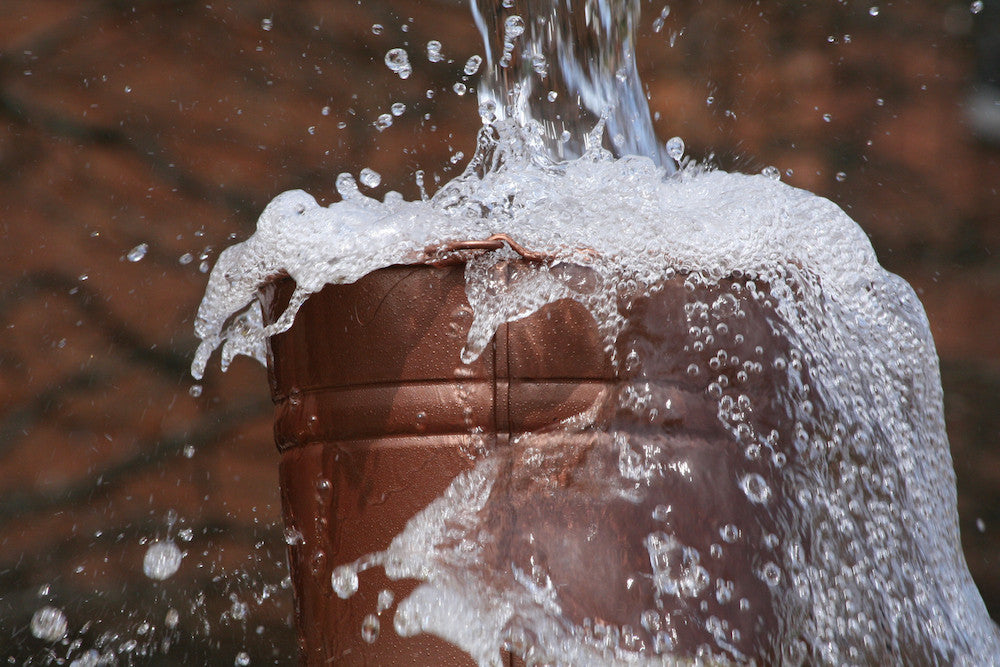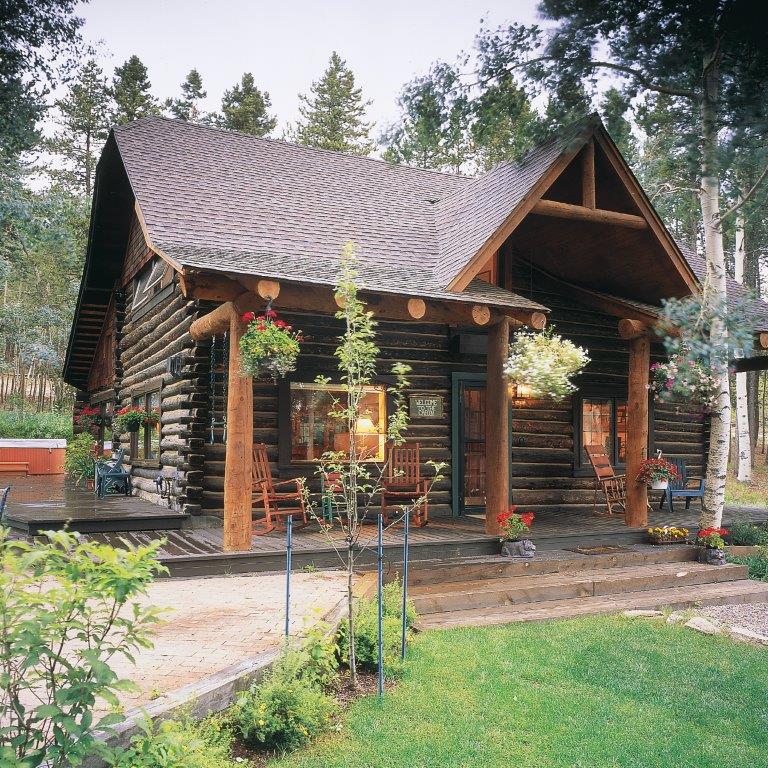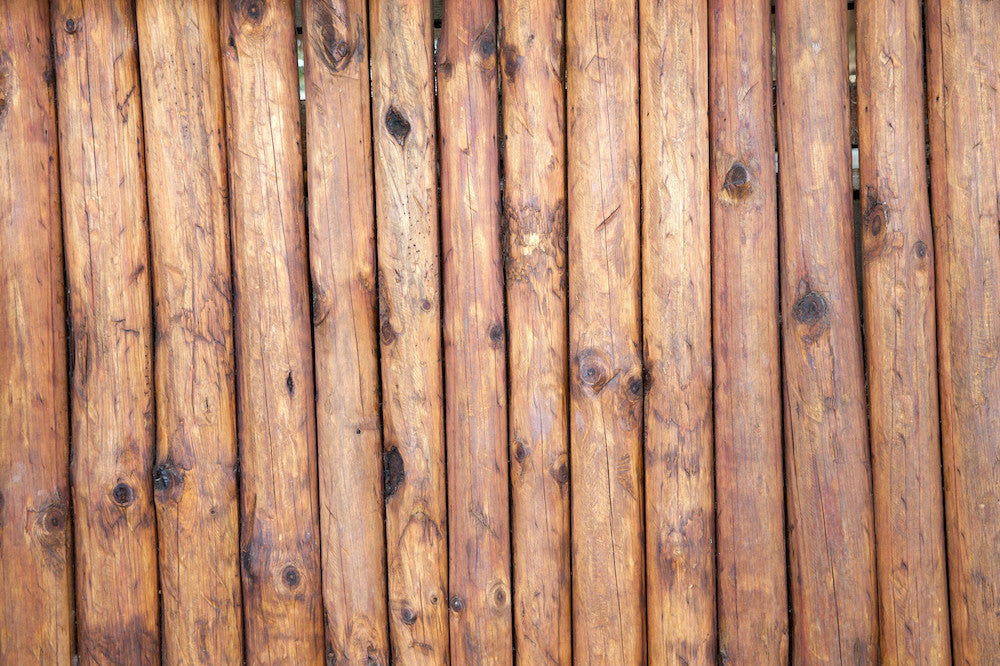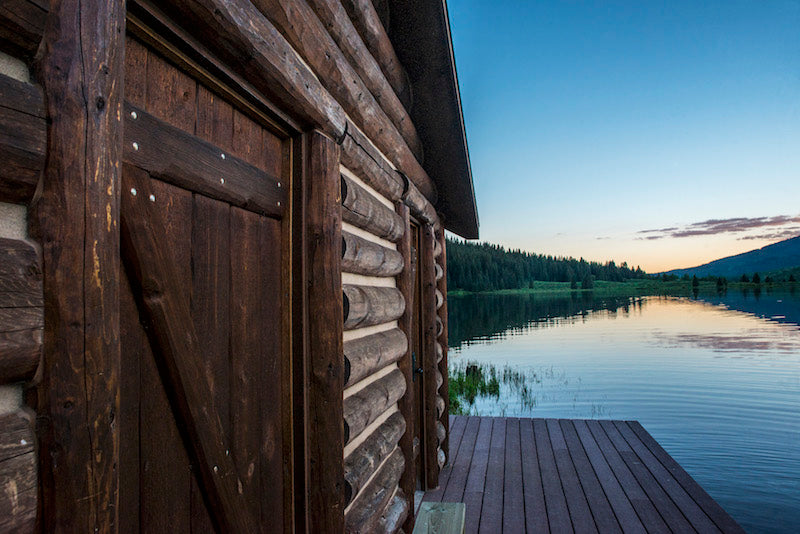How to Clean Your Logs Before You Stain

Before you stain your log cabin, it’s important to clean your logs to ensure that the log surface is stable, clean and free of dirt, oil and failed coatings. But what’s the best way to clean your logs?
The answer varies, depending on the size and scope of your job.
1. Corn Blasting
For larger jobs that require a significant amount of stripping, we recommend corn-blasting.
The good
Corn blasting is the most thorough cleaning and stripping action, combined with the highest production rate of removal of any of the available methods.
Additionally, the corn medium is dry, so it doesn’t wet the wood. This allows you to move right into the staining process instead of waiting for the logs to dry out.
Waiting for the logs to dry could take several weeks, depending on the humidity. Also, corn blasting biodegradable, so it won’t harm surrounding plants and shrubs.
The bad
Corn blasting is messy. You need a certain amount of experience and skill, and it requires relatively heavy duty, expensive equipment. The process almost always raises the grain of the wood, making it necessary to lightly palm sand the surface as an additional step to process.
2. Sanding
For lighter-duty and smaller jobs, a palm sander with 60- to 80-grid paper is a viable alternative.
The good
The advantages of sanding with either a palm sander or cup brush are that it is quick and easy, doesn’t require much setup time, it doesn’t wet the wood, and there’s no heavy or expensive equipment.
The bad
Sanding is a slower process unless you use additional labor.
3. Power Washing
Power washing is a quick and accessible way to wash and prep new construction for staining.
The good
Power washing is quick and probably creates the least mess — even the mess it creates can be washed away. They’re also readily available at equipment rental stores.
The bad
The main disadvantage of power washing is that using water wets the wood, adding a significant amount of drying time — so you’ll have to wait longer before you can stain. It’s also impractical for interior use on anything but new construction.
Pro tip: A power washer shouldn’t have an output pressure greater than 500–800 PSI, otherwise the wood might fuzz. If you can’t find the right power washer, a simple solution is to keep the tip of the washer far enough away from the wood to avoid fuzzing the grain. At 3000 PSI, the use of a fan tip and controlling the spray, keeping it at least three feet from the wood, will help reduce raising the grain.
4. Chemical Strippers
There are several chemical strippers and brighteners you can use to clean your logs before staining.
The good
Chemical strippers are great for light-duty cleaning. They attack the oxidized surface of the wood, as well as the chemistry of the finish, leaving a clean original wood surface.
Spraying the chemical stripping solution on the logs in three- to four-foot manageable work sections will allow time for the solution to work properly without drying out.
Once applied, brush the solution with a stiff industrial scrubbing brush using a back-and-forth motion to properly work the solution into the wood. Thoroughly rinse the surface with a high pressure hose or a power washer.
When the chemical stripper is rinsed away, it leaves a fresh layer of clean wood. The wood is then neutralized using a metallic or citric-acid based neutralizer which must be thoroughly rinsed off with water, and the log surfaces checked for a neutral pH balance (6–8) using litmus paper strips in a simple method as shown in the video above.
The bad
Chemical strippers are not a great option for large-scope jobs, where a pressure washer or corn blasting will be much quicker and easier.
As with corn blasting, chemical strippers almost always leave the wood surface raised or fuzzy. An additional step of palm sanding is required to properly prepare the surface for stain.
Also, certain chemical strippers are hard to handle and may require special protective clothing, eyewear, and attention to plants and animals to maintain a safe working environment.





